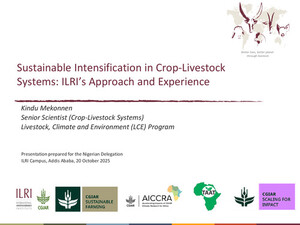
Market access and dietary diversity: A spatially explicit multi-level analysis in southern and western Kenya
Abstract
The risk of malnutrition, particularly micronutrient deficiency, is high in large parts of Sub-Saharan Africa for smallholder farmers. Access to diverse and nutritious food is a key component of food security, and a major development objective. It is widely accepted that good access to markets can play a key role in improving nutrition at the foodshed level. However, the magnitude and even the direction of the effect of increased market access on household dietary diversity (and thus food security) is not universal, with studies showing divergent results. One reason for these divergences may be that models do not account for place-based mediation effects, that is, farmers' local context can affect whether (and the extent to which) access to market is important to their nutrition. Drawing on household survey data from 914 Kenyan smallholder farmers from ten counties in South and West Kenya, we used a novel methodology to evaluate the role of market access in determining household dietary diversity. This methodology combines the clustering of households along places with similar characteristics and multi-level regression analysis to understand the place based variation in effects of different factors on dietary diversity. We found that, depending on how “access to market” is measured, there can be significant impacts on dietary diversity, and this is mediated by farm characteristics. For small farms with already good market access, higher diet diversity is associated with cultivating larger areas and owning larger livestock holdings, but not with easier market access. For isolated larger farms with a focus on livestock production, higher diet diversity is associated with easier market access (i.e., proximity to road), as well as greater livestock diversity. For medium-sized farms with good market access, diet diversity is mildly correlated with easier market access (i.e., proximity to road) but significantly associated with greater crop diversity. The need to account for place-based mediating effects is clearly important and highlights an exigency for greater use and development of localized models that can capture the extent to which effects might change when contexts change.
Citation
Milner, D., Wolf, L., Wijk, M.V. and Hammond, J .2022. Market access and dietary diversity: A spatially explicit multi-level analysis in southern and western Kenya. Frontiers in Sustainable Food Systems 6:740485.









